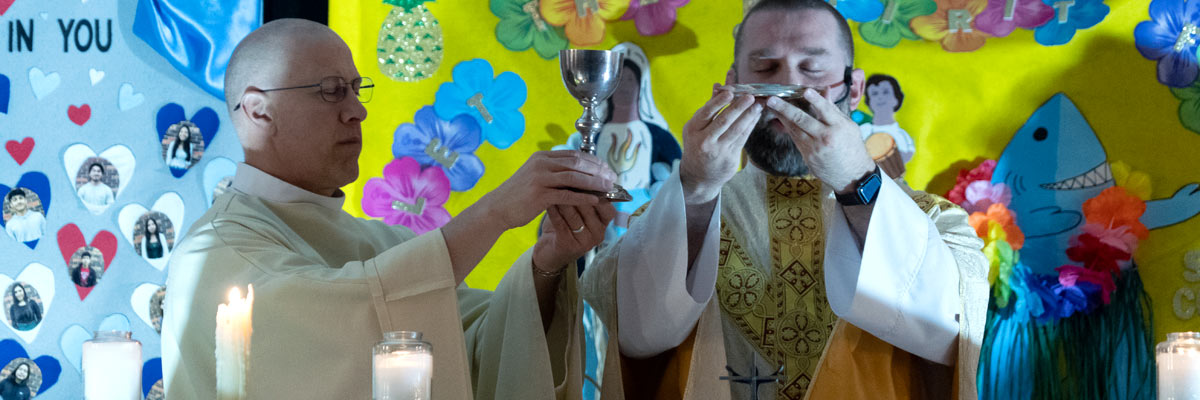Official Website of the
Catholic Diocese of Little Rock
Private revelations may be real, but no one is bound to accept them
Published: January 22, 2005
By Abbot Jerome Kodell, OSB
In the early 1990s, Father Benedict Groeschel, CFR, put together a small book, which is still very helpful for understanding the place of private revelations in the Church and the principles to be applied in dealing with them. It is called “A Still, Small Voice: A Practical Guide to Reported Revelations.” His analysis is timely again because of two events which brought the issue to the forefront recently: Mel Gibson’s use of material from private revelations and visions in his film, “The Passion of the Christ,” and the Oct. 3 beatification of Blessed Anne Catherine Emmerich, whose visions were the basis for some scenes in the film. Here are three of Father Groeschel’s basic rules for dealing with private revelations. Rule 1. Keep all claims of revelations in perspective. Private revelations do not replace public revelation and must always be evaluated for conformity to what Pope John II calls the “single revelation.” They “help the faithful live their faith more fully in a certain period of history.” (“Catechism of the Catholic Church,” 67) The essential element of true religion is the authentic pursuit of a holy life, not visions or revelations. To further this point, Father Groeschel quotes St. Therese of Lisieux, who said, “To ecstasy, I prefer the monotony of sacrifice.” Rule 2. No private revelation comes directly from God and therefore none can be assumed to be inerrantly true. Even an authentic communication from God to an individual is always filtered through the faculties of the person who receives it and may be distorted in transmission. In commenting on the private revelations of St. Catherine of Siena and other saints, Pope Benedict XIV formulated the principle that “such revelations, though approved of, ought not to, and cannot, receive from us any assent of Catholic faith, but only of human faith, according to the rules of prudence.” In other words, they must be subjected to the same prudent judgment with which we treat other spiritual information. Rule 3. A private revelation by definition is personal and therefore must be carefully applied by those for whom it was meant and only within the limits of ordinary human prudence and never against the teaching of the Church. It must never be considered an infallible guide in any situation. Private revelations at Lourdes and Fatima, to mention two of the most well known approved by the Church, have brought many gifts of grace and healing to the faithful. But the Church binds no one to accept these revelations. Therefore no one’s faith or devotion can be judged on the basis of the acceptance or non-acceptance of particular apparitions or private revelations. Blessed Anne Catherine Emmerich was beatified on the basis of the sanctity of her life and her faithfulness to the “single revelation,” and that will be the basis of the investigation into her possible canonization, not her private revelations, which were personal gifts of God to her. Her revelations will undoubtedly receive more publicity in the process, but they will not become more authoritative if she is canonized. Blessed Anne Katherine’s visions of the passion of Jesus and other visionaries that Mel Gibson incorporated into his film served to embellish the story, but they have no more authority than did other additions to the biblical narratives coming from the imagination of the filmmaker and his colleagues; and they should be subjected to the same critique. Abbot Jerome Kodell, OSB writes from Subiaco Abbey.









